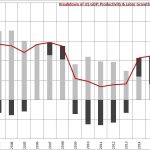According to Deutsche Bank’s Aleksandar Kocic, we live in a reflexive world, one where “the Fed knows that the market knows and the market knows that the Fed knows that the market knows, so everyone knows, but pretends that nobody knows and the game goes on.” That pretty much covers much of modern market analysis which, like some mutant version of the Heisenberg Uncertainty Principle, implies that it is impossible to know the value of assets without also taking into account what the Fed thinks about said value, and what it will do in response to the valuation manifesting itself in the form or asset prices.
There’s more to it.
Following up on last week’s note, in which the DB derivatives analyst looked at the market’s current “metastable” state from the perspective of Minsky dynamics – a series of constantly shifting disequilibria which vary in leverage and volatility (the lower the vol, the higher the leverage until the system tips over and is forced to reset) to analyze what may be the exogenous “circuit breaker” that finally snaps the fake calm of the past 9 years of central planning, overnight Kocic put it all together in his latest report which converges on most of the tropes he has been discussing over the past year, including the build up of negative convexity by way of continued state of exception, misallocation of capital, buildup of tail risk, and metastablity, and explains why markets are caught in a “Sachzwang – a factual constraint residing in the nature of things that leaves no choice but to perpetuate the existing conditions.”

For those unfamiliar with Kocic’s latest metaphysical allegory for capital markets – which would be everyone – this is how he explains it. As usual, a PhD in philosophy is recommended, and increasingly, required.
Continued pressure on vol is shaping to become the signature mode of this year. Its decline from its post-elections high at 95bp (in terms of 3M10Y) to its near all-time lows of 55bp in less than 12 months has been a function of general distribution of risks and persistent supply of convexity through complacency, transparency, liquidity, and predictable monetary policy. Politics no longer matters — increasing negative newsflow has created political bottlenecks which have eroded the ability to produce consensus resulting in a noisy status quo. Yield enhancement strategies seems to be everywhere. Credit spreads have compressed to their post-2008 lows while risk premia and volatilities have collapsed across the board.
At the same time, this state of affairs is causing a buildup of negative convexity out-of-money by way of continued state of exception, misallocation of capital, buildup of tail risk, and metastablity. The market is vulnerable to bear steepening of the curve with Fed massively negatively convex to inflation risk. One would expect that vol would find support in the face of these risks. However, there does not seem to be any meaningful signs of resistance levels at this point. Investors are aware of the underlying risks, but are implicitly forced to ignore them in order to survive the short-term demand for return.
Unlike the chess “zugzwang”, in which the player is forced to make a move, making their position significantly weaker, and would thus rather not move at all, in the Kocic world, the equilibrium market state is a suffocating paralysis under which the only option is making no move at all, thereby perpetuating the paralysis. The final outcome – as we are confident the metaphysical analyst will eventually unveil – is Cosmic Death… a state of 0 Kelvin in which central planning crushes one’s will to exist, let alone trade, or some other similarly dramatic philosophical narrative.


















Leave A Comment